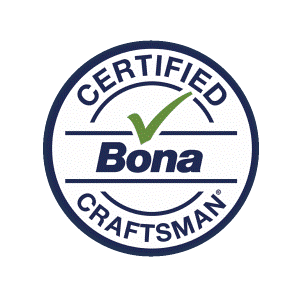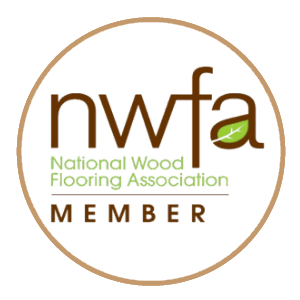What Area Rugs Protect and Which Ones to Avoid for Your Flooring
You’ve invested in your beautiful hardwood floors, and now the question is, what can I do to increase my investment’s longevity and complement the space’s beauty? One answer is area rugs. Is it simple enough? Yes, however, you have many choices as a home or business owner.
Hardwood Protection From What?
Even though hardwood floors are very hardy, some damage can come from scuffs, scratches, direct sunlight, and water. UV light from the sun can break down certain chemicals in your wood floor and cause its appearance to fade. Water can stain and discolor wood and, in extreme cases, cause warping and even rot—or high-traffic areas for kids, pets, and visitors.
Types of Area Rugs to Consider
Area rugs come in various colors, shapes, sizes, and textures; let’s explore these options to understand which area rugs are best suited for where you are trying to protect your wood floors.
Wool Area Rugs
Wool is a natural fiber rug traditionally handwoven, hand-tufted, hand-knotted, or hand-loomed. In addition, there are machine-loomed wool rugs; however, wool rugs are typically made with synthetic fibers and not authentic wool. Genuine wool rugs are more expensive due to the extensive work that goes into designing and building them, but the quality is excellent.
Given its heftiness, this type of rug is ideal for high-traffic areas like the living room, bedroom, and entryway. One thing to consider is that wool rugs shed for the first couple of months, requiring regular vacuuming.
Natural Fiber Area Rugs
Jute, bamboo, coir, or seagrass area rugs are significant from a design perspective, adding texture to a room, and the price point can range. Natural fiber area rugs are great for layering underneath smaller decorative ones in large spaces. Cleaning natural fiber rugs can be tricky, often showing watermarks, but they protect your hardwood floors and are fade resistant.
Other natural rugs include leather, hide, and sheepskin, which add texture to the space. These are great for small areas or oddly shaped rooms. However, they collect dirt easily, so it’s important to shake them out and remember that they are easily cleaned via a washing machine or hand washing. They are great next to beds and low-traffic areas, but they can shed and curl at the edges, which is easily remedied with a low iron setting on the backside of the hide.
Silk Area Rugs
These area rugs can come in 100% silk or a silk blend. They have a sheen, are often delicate, very soft to the touch, and difficult to clean. Less expensive options that have sheen are rayon and viscose. Whether you do silk or one of the alternatives, these rug types are best in non-direct sunlight and low-traffic areas.
Cotton Area Rugs
Cotton rugs come in various colors and are inexpensive compared to the other alternatives. However, cotton ones fade quickly and are not great at repelling stains, but these rugs come in toxin-free and eco-friendly cotton. This rug type is best in casual spaces, not in direct sun, and should be expected to be replaced on a semi-regular basis.
Synthetic Area Rugs
Synthetic area rugs include faux fur, faux hide, polypropylene, polyester, and microfiber materials. These rugs are durable, mimic expensive materials like wool, and are flexible in style and color. In addition, they feel soft, budget-friendly, fade-resistant, and great for high-traffic locations (living rooms, dining rooms, and entryways).
If you choose synthetic, know that these rugs tend to get dirty quickly, requiring more regular cleaning. Also, use rug pads, as some have a rigid plastic backing that can scratch your hardwoods.
Area Rug Professional Tip
Rug pads, rug grippers, and stain-protectant accessories are essential for area rugs on hardwood. There are many price points and fabric options for rug accessories. You can find most of these products online. The benefits include:
- Anchoring your area rug and preventing slipping.
- Keeping area rug edges from curling and bunching.
- Safeguarding the floor from scratches and heavy furniture indentations through the rug.
- Adding a layer of cushioning underneath the rug.
- Reducing noise for below floor.
- Insulating rooms from cold subflooring.
- Making the area rug easier to clean and keep clean.
However, be careful regarding any adhesive or rug tape that could potentially harm your hardwood floors.
Looking to Refinish or Get New Hardwood Floors?
If you have more questions about hardwood flooring or are looking for new ones, call us today. We have a beautiful showroom in Annapolis, Maryland, and our experts are always there to assist you.



This post was truly worthwhile to read. I wanted to say thank you for the key points you have pointed out as they are enlightening.